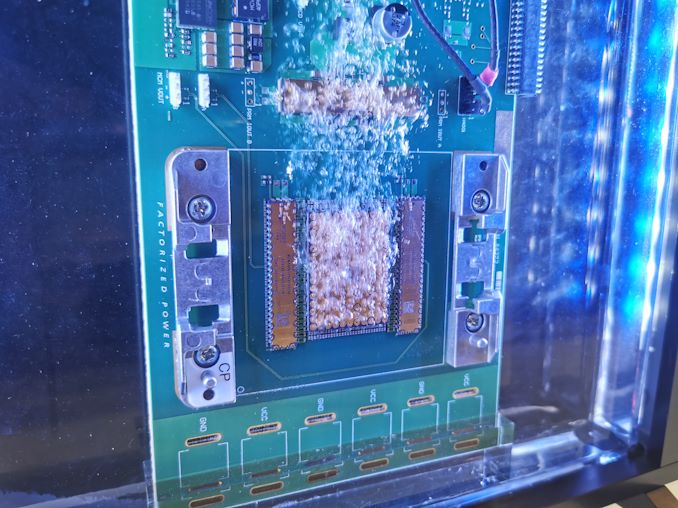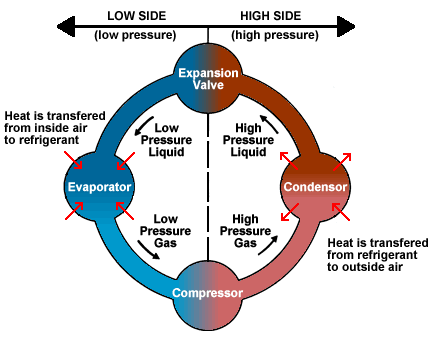Cooler
Table of Contents
What is a Cooler?
A cooler is a device which regulates the temperature of a designated area or container to keep it cool [1]. Applications of cooling systems can range from refrigeration for food storage to the cooling of industrial equipment to prevent overheating. There are numerous coolers used for different types of applications based on their size, cooling method, and extent of temperature regulation.Types of Coolers
Air Coolers
Air coolers, also known as evaporative coolers, function by harnessing the power of water evaporation to cool temperatures [2]. Generally, an air cooler will consist of a fan, thick pads, water reservoir, and additional controls to fine tune results. The fan draws hot, dry air into the air cooler and across the cooler pads. These thick pads absorb water from the reservoir, and are maintained in a consistently damp state. As the hot air crosses the pad, the water molecules on the surface evaporate, which causes the air temperature inside the cooler to drop. Then, finally, the fan blows the colder air outside of the cooler.
Air coolers have two major advantages over traditional air conditioning systems, which are energy efficiency and sustainability [2]. Air coolers require far less energy to operate than traditional air conditioners because, essentially, electricity is only needed to power the fan that draws airflow over the cooling pad. Consequently, using an air cooler over a standard A/C system can cut down on cooling expenses by up to 70% [3]. Furthermore, less electricity usage lowers the carbon footprint, in addition to the fact that air coolers use water rather than chemical refrigerants, which are harmful to the ozone layer. The benefits of air coolers extend past energy savings, air coolers are also easy to install and maintain.
The major drawback with air coolers is that they only perform optimally in dry conditions, and are not as effective in humid conditions [3]. Commercial applications of air coolers, include but are not limited to commercial kitchens, factories, warehouses, office buildings, retail centres, mining operations, and greenhouses.
Forced Air Coolers - Blast Chiller
A blast chiller is essentially a very effective refrigeration system which cools 4 to 10 times faster than traditional refrigeration techniques [4]. Forced air cooling in a blast chiller is accomplished by exposing objects in a cooling room to higher air pressure on one side of the system. The pressure difference forces cool air through the objects, greatly increasing the rate of heat transfer.
Blast chillers are primarily used in the food industry, whether it be in agriculture or food service [4]. The reason for this is because the rapid cooling process of blast chillers ensures that produce and food quickly reach and maintain a desired temperature. This is crucial in the food industry, as a short delay before the food reaches the desired temperature can cause significant deterioration in the food. Another advantage of blast chillers is that efficient cooling results in shorter cooling times for batches of food, ultimately resulting in more product being able to be cooled. The only major disadvantage of blast chillers is that they require a larger amount of energy consumption in comparison to standard refrigeration, which is why they are only used commercially in situations where cooling time is integral to the quality of the product.
This is a cross-sectional diagram which showcases how an air cooler works [3]. |
|---|
|
Immersion Coolers
Immersion cooling, also referred to as liquid submerging cooling, is the practice of submerging computer components in a thermally, but not electrically, conductive liquid [5]. Liquid submersion is a common practice of cooling, used in large power distribution components such as transformers. It is less commonly used for cooling of IT hardware, but it is slowly becoming more popular in that application. The most important aspect of immersion cooling is that liquid must have a sufficiently low electrical conductivity so that it doesn't interfere with computer hardware, that is why a dielectric liquid is preferred. The difference between immersion and traditional liquid cooling is that in liquid cooling, the working fluid is potentially harmful to electronics and thus flows through a sealed loop isolated from the heat source. Therefore, heat from the heat source is indirectly transferred to the coolant, whereas in immersion cooling, the coolant is in direct contact with heat source.
Immersion cooling boasts a number of advantages and disadvantages. The main advantages are that it is extremely effective at transferring heat from electronic components, as a result components within the cooling system can operate at peak performance without overheating; improved lifespan of computer components, due to the 100% controlled environment with no dust, temperature or humidity fluctuations, and no impurities; lastly, there is minimal maintenance [6]. The main disadvantages are that immersion cooling is often "over qualified" and unnecessary for average data centres, it is only truly needed in high-performance computing (HPC) environments which deploy a large amount of servers, such as supporting cryptocurrency, or global online gaming; requires hardware to be modified to withstand submersion in fluid; and lastly, an immersion cooling system is more expensive than a liquid cooling system [7].
Essentially, immersion cooling systems are more effective than liquid cooling systems, but one will only truly reap significant benefits from immersion cooling in high-performance computing environments. So, if the scale of the application does not necessitate an immersion cooling system, it would be economically beneficial to go with a liquid cooling system as it will serve the same function for a fraction of the price.
| This is an example of immersion cooling in a supercomputer [8]. |
|---|
Refrigeration Cycle
The refrigeration cycle is a critical component of modern air conditioning systems [9]. The refrigeration cycle functions by controlling the level of energy in the system's refrigerant: some parts of the system have energy-packed refrigerant ready to release heat, whereas other parts of the system have energy-depleted refrigerants, which are ready to absorb heat. There are four major components of the cycle: condensor, compressor, evaporator, and expansion valve.
The refrigerant first comes into the compressor as a low pressure gas, subsequently it is compressed and flows out of the compressor as a high pressure gas [9]. The gas then flows to the condensor. This is where the gas condenses to a liquid, then gives off it's heat to the outside air. Then, the liquid refrigerant moves to the expansion valve under high pressure. This valve restricts the flow of the fluid, and lowers its pressure as it exits the expansion valve. The low pressure liquid refrigerant moves to the evaporator, where the heat from the inside air is absorbed and, as a result, the refrigerant undergoes a change of state from liquid to gas. Lastly, as a hot-low pressure gas, the refrigerant moves to the compressor where the entire cycle is repeated.
| This diagram visualizes the refrigeration cycle [10]. |
|---|
References
Contributors:
| User | Last Update |
|---|---|
| Former user (Deleted) | 1381 days ago |
| Former user (Deleted) | 1387 days ago |
| Former user (Deleted) | 1403 days ago |
Faculty Advisor: Sarah Meunier


